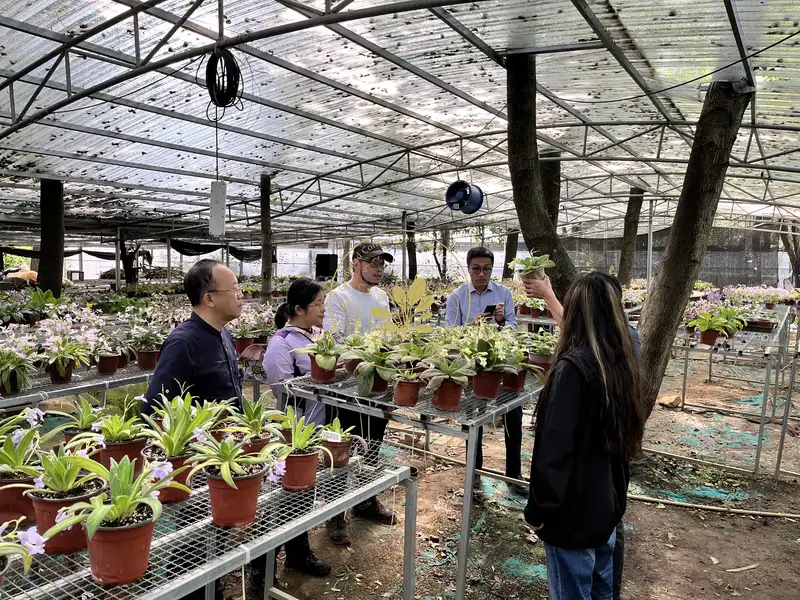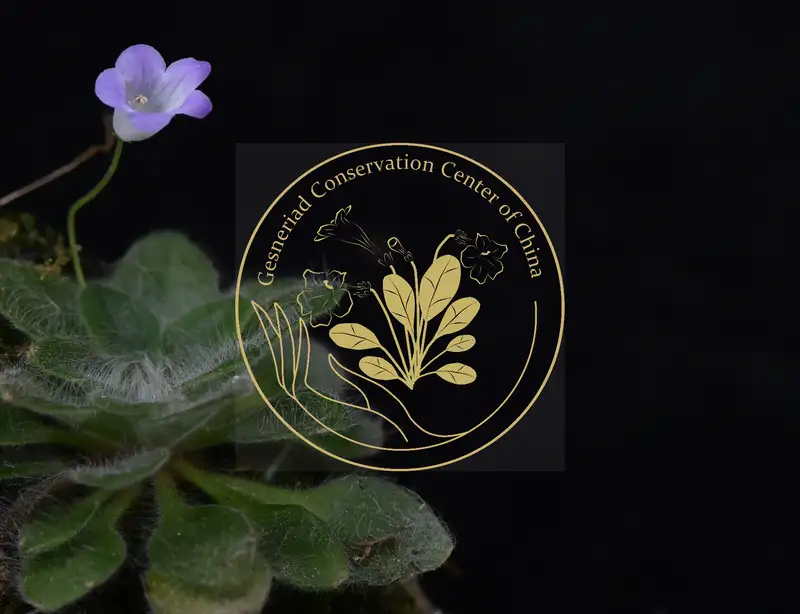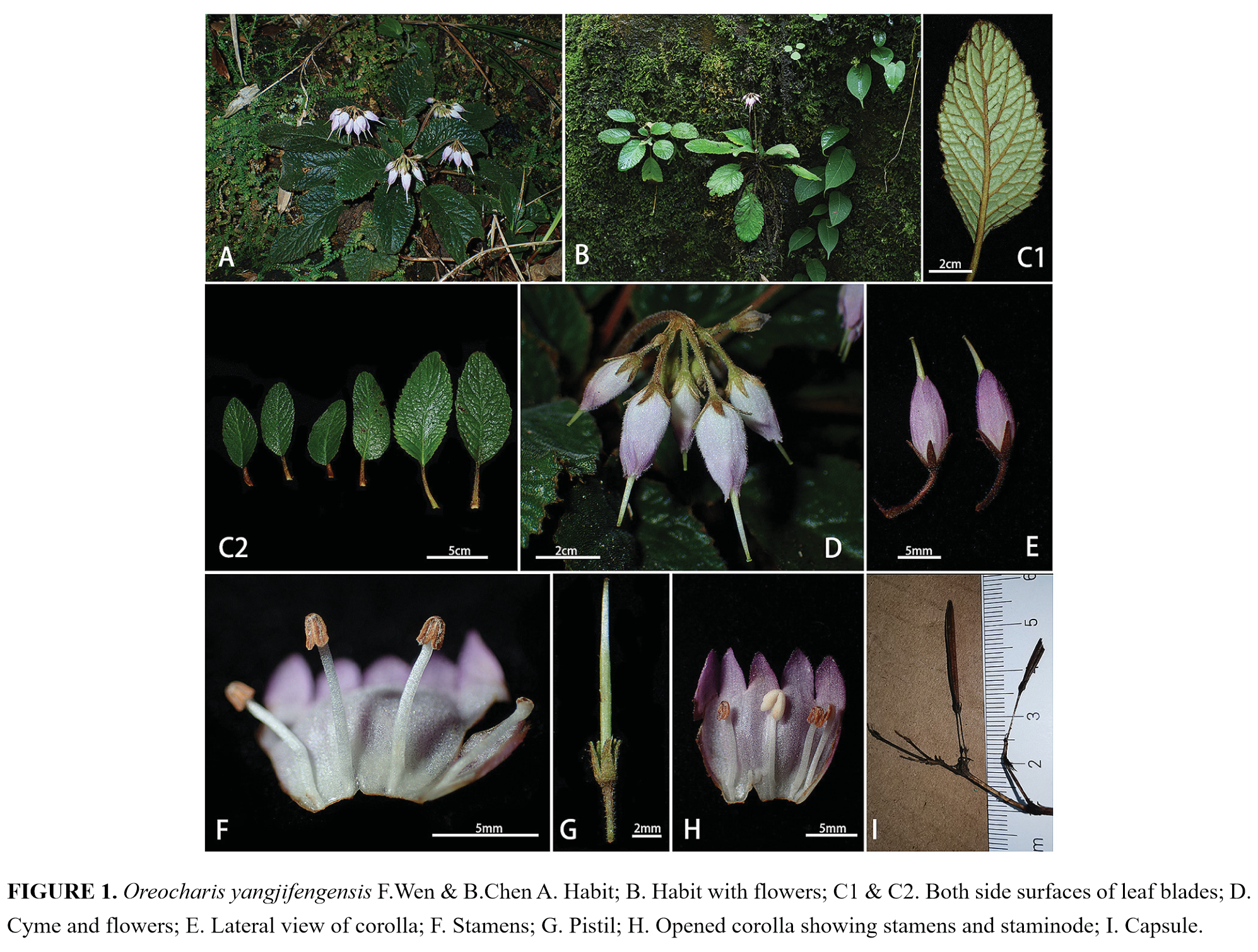No.11 XIN HONG, ZHONG-LIN LI, JIA-ZHI LIU, SHOU-BIAO ZHOU, WEI-HUA QIN & FANG WEN
Two new species of Primulina(Gesneriaceae)
from limestone karsts of
PeerJD 10.7717/peerj.4946
ABSTRACT
The limestone karst area of
Original article link:https://peerj.com/articles/4946
PDF link: https://peerj.com/articles/4946.pdf
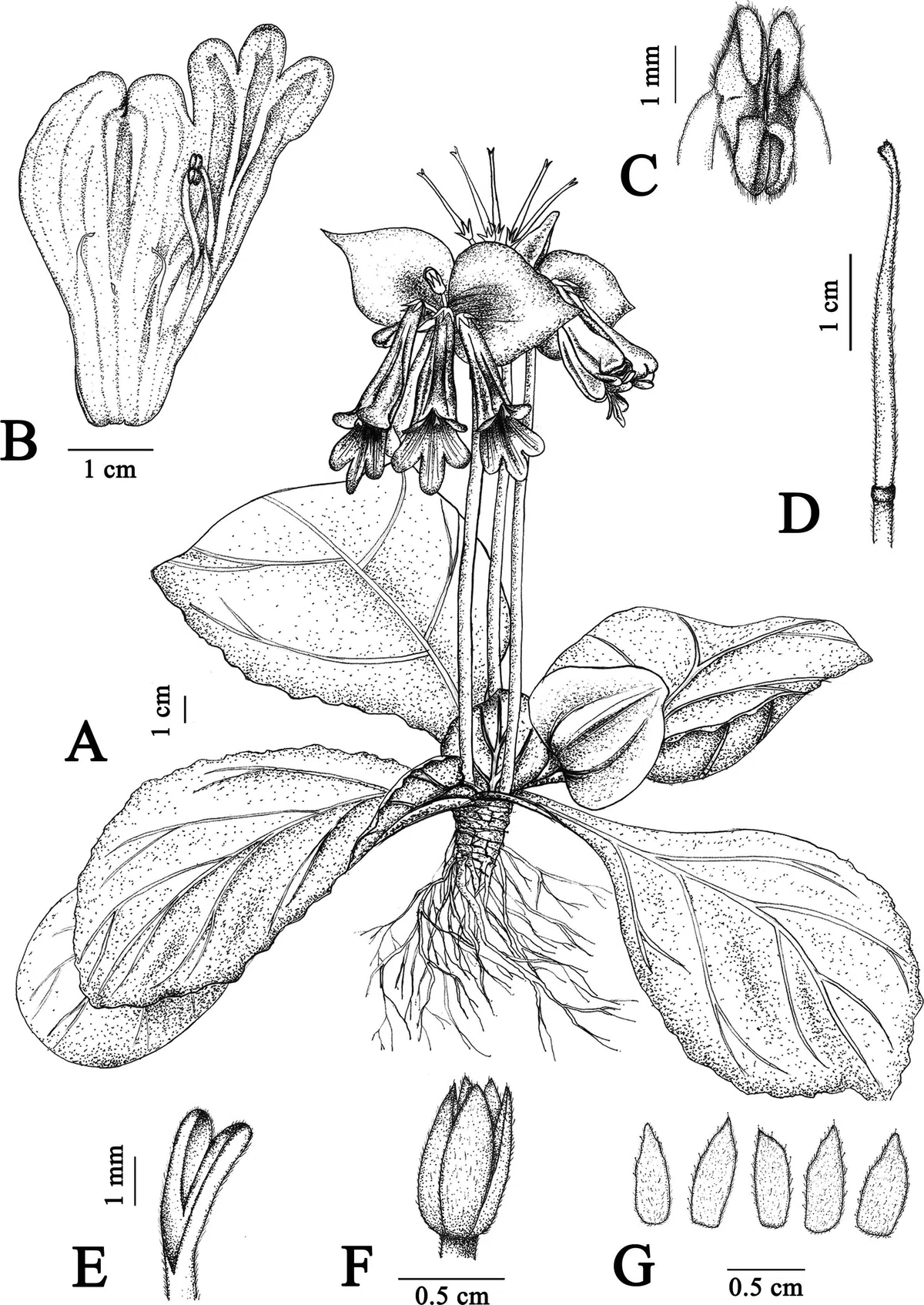
Figure 1 Illustration of Primulinadavidioides sp. nov. (A) habit in flowering period; (B) dissection of a flower showing stamens and staminodes; (C) anthers, showing beard; (D) pistil; (E) stigma; (F) ovary and calyx; (G) calyx (Image credit: Xiao-Ming Xu, drawn from the holotype).

Figure 2 Photographs of Primulina davidioides sp. nov. (A) habitat; (B) population; (C) the flower bud; (D) flowering plant with cymes; E–H: cymes: (E) showing adaxial bracts; (F) showing abaxial bracts; (G) frontal view of cymes; (H) top view of cymes); (I) lateral view of corolla; (J) young fruit; (K) top view of corolla; (L) upward view of corolla; (N) opened corolla, pistils without corolla and calyx lobes; (O) dissection of a flower showing staminodes; P–Q: stamens (P) the reverse side, showing beard; (Q) the frontal side, showing the anthers; (R) capsules (Photo credit: Fang Wen and Xin Hong).
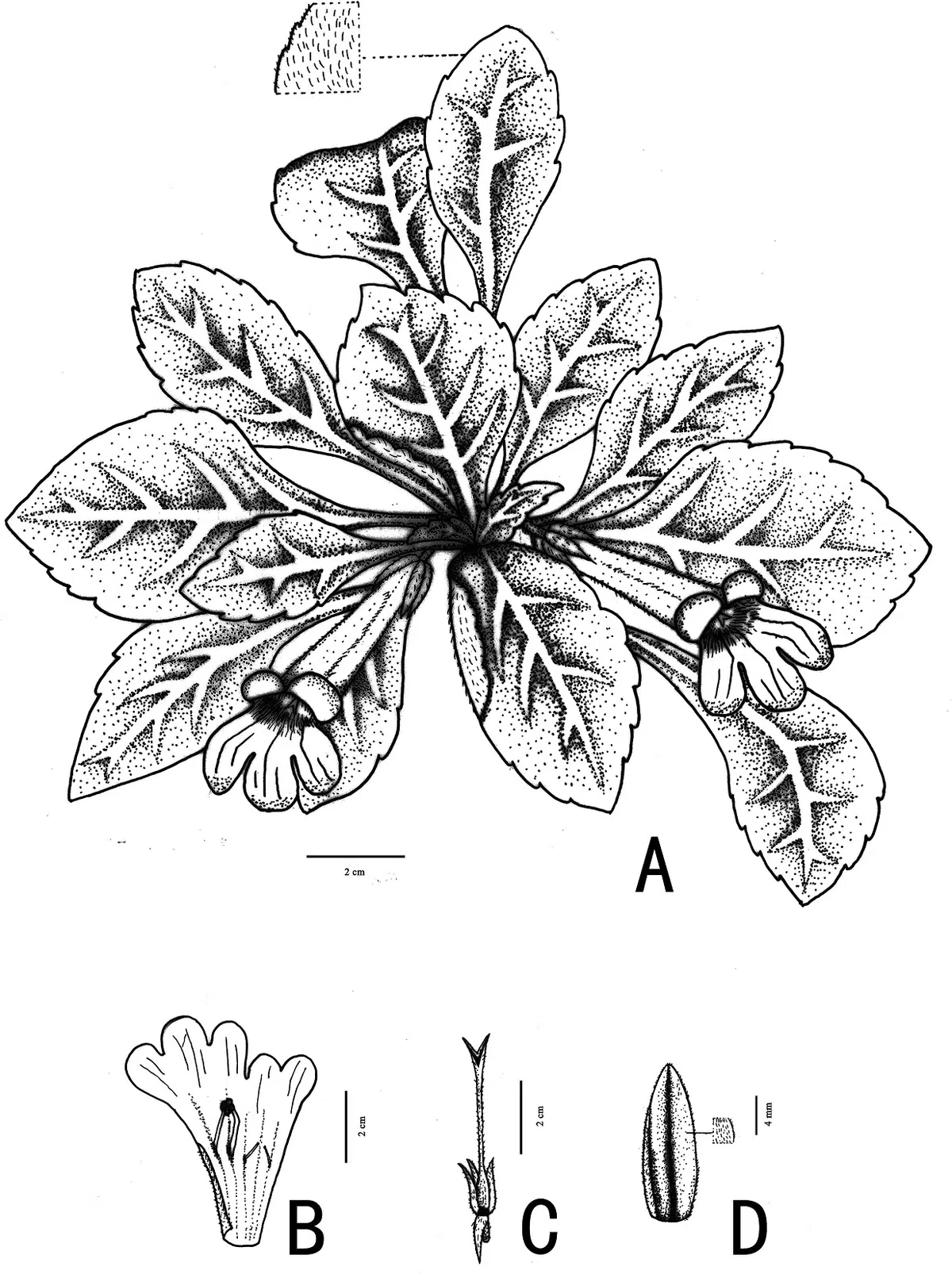
Figure 3 Illustration of Primulina hiemalis sp. nov. (A) habit in flowering period; (B) dissection of a flower showing stamens and staminodes; (C) calyx and pistil; (D) calyx, showing puberulence (Image credit: Wen Ma, drawn from the holotype).

Figure 4 Photographs of Primulina hiemalis sp. nov. (A) habitat; (B) plant; C–F: corolla: (C) frontal view; (D) right side view; (E) top view; (F) left side view; (G) calyx; (H) pistils with calyx lobes, showing the stigma; (I) opened corolla (Photo credit: Fang Wen).



